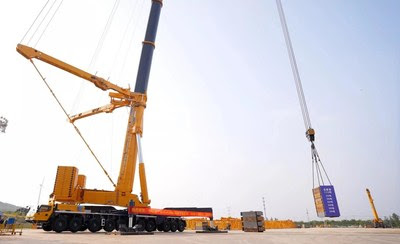LONDON, Sept. 16, 2022 (GLOBE NEWSWIRE) — CS Global Partners, one of the world’s leading government advisory agencies, is the official representative of the governments of the Commonwealth of Dominica, Saint Lucia and St Kitts and Nevis all of whom took part in the first-ever Afri-Caribbean Trade and Investment Forum (ACTIF2022), which took place in Bridgetown, Barbados, from 1 to 3 September 2022. The forum opened a new chapter for the relations between the Caribbean and Africa. Held under the theme, ‘One People, One Destiny, Uniting and Reimagining Our Future’, the forum set in motion various initiatives to further deepen and build new trade and investment relationships between Africa and the Caribbean.
The three-day forum was convened by African Export-Import Bank (Afreximbank), the Government of Barbados in collaboration with the African Union Commission (AUC), African Continental Free Trade Area (AfCFTA) Secretariat, Africa Business Council, the Caribbean Community Secretariat, and the Caribbean Export Development Agency.
The Prime Minister of Barbados – Mia Amor Mottley, expressed pleasure at being selected as the host country for ACTIF 2022. She asserted that Africa and the Caribbean share common roots and need to work and act together in various sectors. Participants committed to building a commercial bridge between the two regions for their prosperous future.
ACTIF 2022 was the first forum of its kind between the two regions and aimed to provide an opportunity for the Caribbean and African business communities, as well as governments, to establish new commercial and strategic relationships with the goal of expanding trade and investment between both the regions. The high-level support between the two regions is intended to boost bilateral cooperation and engagement in trade, investment, technology transfer, innovation, tourism, culture and other sectors. The forum also opened doors to effective business matchmaking between the two regions.
The three-day conference featured various panel discussions on several topics, which were based on business-to-business engagements. The delegates discussed topics such as: developing special economic zones (SEZs) and industrial parks; boosting industrialisation and manufacturing; improving infrastructure, financing and trade logistics, including regional integration, promoting trade and tourism, creating the environment to accelerate private sector investment, improving agricultural productivity and increasing agribusiness opportunities and food security.
Along with this, the forum also witnessed the signing ceremony of two partnership agreements, 10 MoUs and three finance facilities. The star document of the forum, which signified the success of the summit, was the partnership agreement between seven members of the Caribbean Community and Afreximbank to promote and finance South-South trade and investment between Africa and the Caribbean. Its ultimate goal is to promote and provide insurance and guarantee services covering commercial and non-commercial risks associated with African and Caribbean exports.
Caribbean countries such as Barbados, the Republic of Suriname, the Federation of St Kitts and Nevis, the Commonwealth of Dominica, Saint Lucia, Antigua and Barbuda and St Vincent and the Grenadines signed the agreement with African Export-Import Bank.
The agreement will help to boost knowledge sharing between Africa and the Caribbean region with technical cooperation, research and several joint events. It also has the potential to accelerate the membership of CARICOM nations in Afreximbank as it will enable the bank to operate in the region and deliver on the new vision.
Over and above this, in order to mobilise trade and investment between the two regions, Afreximbank also signed a US$250 million Trade and Investment Agreement with the Central Bank of Barbados.
Further, Afreximbank outlined their aim to establish the export-import as they signed a MoU with the Caribbean Association of Banks. The signing ceremony took place in the presence of hundreds of delegates comprising African and Caribbean business leaders and government officials discussing how to improve trade and investment between the two regions. It was signed by the Chief Executive Officer, CAB, Wendy Delmar, and the Executive Vice President of Afreximbank, Denys Denya.
To sustain these efforts, Africa-Caribbean Business Council, CARICOM Private Sector Organisation and Afreximbank also signed another MoU. The rest of the memos included Ghana Export Promotion Authority and Barbados Investment and Development Corporation signed by BIDC’s Hill and GEPA’s Dr Afua Asare, and BIDC, GUTA’s Dr Joseph Obeng and BCCI’s Anthony Branker, Ghana Union of Trade Association and Barbados Chamber of Commerce and Industry signed by Hill.
Various senior government representatives, business leaders, representatives of business associations, prospective investors and buyers, project promoters, development agencies, multilateral finance institutions, think tanks and research institutions from Africa and the Caribbean were in attendance at ACTIF 2022 with more than 1,500 delegates representing 93 countries (comprising 48 African countries, 12 Caribbean countries, and 33 other countries).
The specific objectives of ACTIF2022 were:
- Promotion of inter-bank relationships, which includes financial flow and fostering payment.
- Development of cultural and creative engagements between two regions that can be commercially viable.
- Creation of a business case for a potential AfriCaribbean Free Trade Area.
- Creating a suitable platform which helps to disseminate trade and investment information and other products and initiatives of the bank, which will support trade between Africa and Africans in the diaspora.
- Help in the reduction of the counterpart risk perception among African and Caribbean businesses in dealing among themselves.
- Promotion of trade and investment between Africa and the Caribbean as the forum served as the platform for market identification, building business partnerships, exchange of trade and market information, and co-investments.
- The forum also facilitates Afri-Caribbean investments by fostering and bolstering cross-regional business and investment linkages.
Nandi Canning nandi.canning@csglobalpartners.com +27828215664


